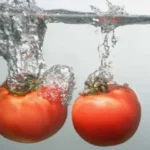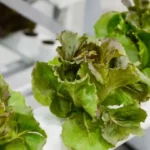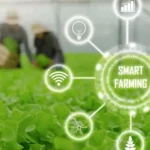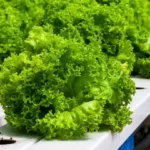Have you ever felt overwhelmed by starting your hydroponic garden, unsure which plants to choose for a successful beginning? Picture yourself eager to embark on this new gardening adventure, craving fresh produce at your fingertips. You seek guidance and straightforward advice to set you on the right path. Let me help you navigate this exciting journey by highlighting the best plants for hydroponics beginners.
To ensure a successful start in your gardening journey, the top plants for beginning hydroponic growers include:
- Leafy Greens
- Herbs
- Tomatoes
- Cucumbers
- Strawberries

As you continue reading, you’ll uncover essential recommendations and considerations to kickstart your hydroponic experience. Imagine the satisfaction of harvesting your home-grown produce, knowing you’ve chosen the perfect plants to thrive in your hydroponic system.
From fresh salads to flavorful herbs, explore a variety of options that will not only simplify your gardening efforts but also enhance your overall experience. Let’s get ready to transform our gardening skills and enjoy the benefits of hydroponic gardening by choosing the right plants for our success!
Humble Highlights
- Discover these top 5 unusual crops to grow in your home hydroponic setup and why they should consistently be a part of your cultivation so you can achieve faster growth and nutritious food for your family!
- Uncover the precise pH levels your juicy tomatoes need in your hydroponic setup so you can attain consistently successful harvests in as little as six weeks.
- Save time by knowing when to begin to support your heavier hydroponic plants, like tomatoes and cucumbers so that you can provide breathtaking harvests full of delicious home-grown food.
Leafy Greens
Starting your hydroponic journey with leafy greens like lettuce, spinach, and kale is recommended for beginners due to their fast growth and low nutrient requirements.

Leafy greens thrive in various hydroponic systems, such as NFT, ebb/flow, or smaller countertop setups like Aerogarden. Salad greens are easy to grow and versatile for cooking, and they can be included in untold recipes and dishes. 1
Monitoring nutrient levels is crucial, especially when transitioning to flowering herbs like mint, rosemary, and dill. Adjusting nutrient levels as your plants grow supports healthy growth and maximizes full yields.
Regularly inspecting for diseases and pests is vital to sustaining the health of your leafy greens in a hydroponic setting. By monitoring these aspects proactively, you can enjoy a plentiful harvest of nutritious leafy greens for your culinary creations.
Regularly harvesting small amounts of salad greens ensures a continuous fresh supply and promotes further growth. This cut-and-come-again method ensures you receive multiple harvests from each lettuce plant.
When harvesting your greens, be sure to use a sharp knife, scissors, or micro pruners. Also, harvest your greens about 2-3 inches above the water line to increase the chances your greens continue to grow.
Herbs
Growing herbs is a rewarding experience for beginners in hydroponics due to their fast growth and versatility in cooking. Herbs are a great choice for new hydroponic gardeners because they’re easy to grow and maintain, providing a constant supply for meals.
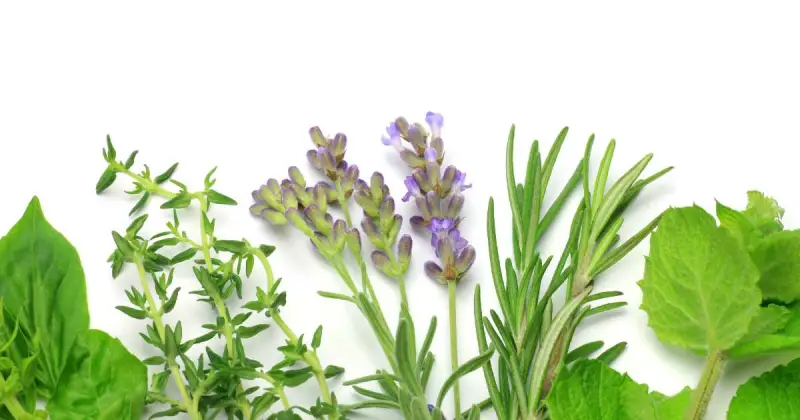
Whether you grow your herbs within an NFT system, ebb/flow, or an Aerogarden setup, herbs adapt well to almost any hydroponic process so long as proper care and nutrient adjustments are prioritized. Adjusting nutrients for flowering herbs can improve their growth and flavor, resulting in a plentiful harvest.
Regularly harvesting small amounts of herbs can encourage further growth, ensuring you always have fresh choices for your dishes. Having herbs in your hydroponic garden allows you to enjoy continuous fresh ingredients whenever needed. 2
Tomatoes
Consider growing hydroponic tomatoes once you’ve mastered herbs in your hydroponic system. These plants thrive in a pH range of 5.5-6.5 for optimal growth. Adequate light is essential, and artificial lighting may be necessary indoors if you can’t access a sunny windowsill or sunroom.
Depending on the variety, tomatoes can be harvested between 45-70 days. Support is crucial as the fruit’s weight can bend or break the plants, throwing all your efforts to the wind. Be sure to secure your plants once they become about 16 inches tall. 3
The Hydrofarm Root Spa Deep Water Culture Bucket System is recommended for beginners. This system ensures tomatoes receive the necessary water and nutrients for healthy growth, so with proper care, you can enjoy a plentiful harvest of delicious hydroponic tomatoes.
One top step that stops new hydroponic gardeners from beginning their gardening journey is determining what plants to sow in their system. The good news is that it is easy to get started. So, stop guessing and watch this informative video below explaining the top plants you can begin cultivating vegetables in soil-less conditions today!
Cucumbers
When starting hydroponic cucumber cultivation, prioritize warm temperatures and maintain a pH range of 5.5-6.0 for optimal growth. Cucumbers thrive in hydroponic systems and often show growth in as little as 3-10 days, making them an excellent choice for beginners.
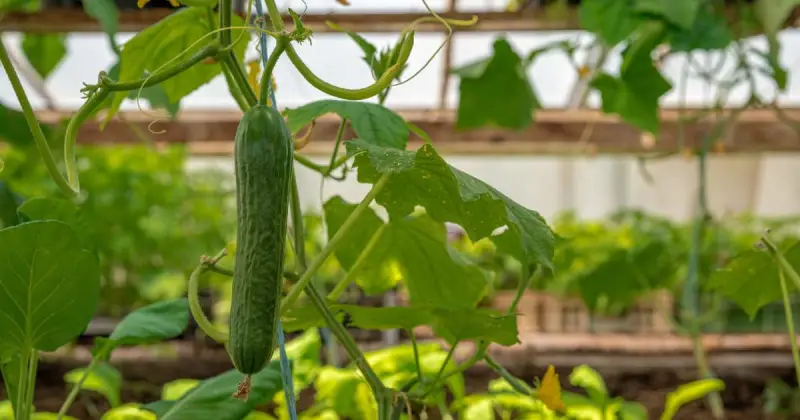
Consider ebb-and-flow setups for a nutrient-rich water supply to support cucumber development. Like tomatoes mentioned above, sturdy support systems are essential, as cucumbers can become heavy to prevent plant damage when mature.
Cucumbers can be harvested in 50-70 days, depending on the variety and hydroponic system used. Expect a plentiful cucumber harvest by maintaining the correct pH levels and environmental conditions. Embrace hydroponic techniques to grow these delicious vegetables indoors. 4
Strawberries
When transitioning to hydroponic cultivation for strawberries, maintain pH levels between 5.5 and 6.2 for optimal growth. Opt for day-neutral or ever-bearing varieties suitable for indoor systems. Hydroponically grown strawberries can be harvested rapidly and mature in about 60 days.
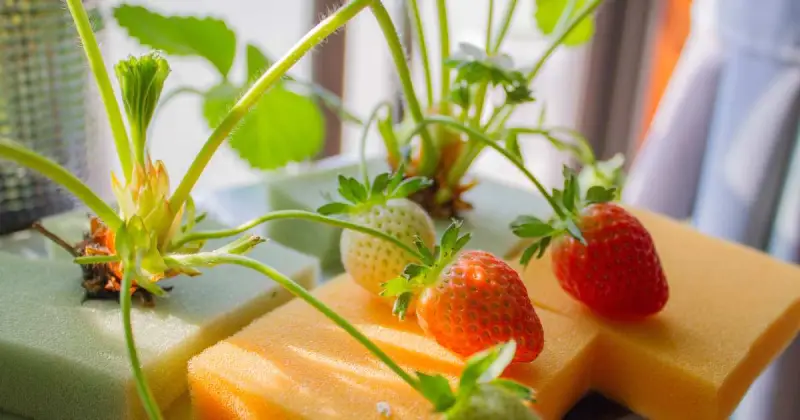
Monitoring and adjusting pH levels within the specified range is crucial for achieving optimal growth. Day-neutral varieties are ideal for indoor hydroponic setups as they can fruit regardless of day length. Ever-bearing strawberries can produce 1-2 crops annually in hydroponics, ensuring a continuous harvest. 5
Choosing these varieties allows for fresh strawberries year-round, meeting the need for a consistent harvest cycle. Incorporating these choices in your hydroponic system will result in a plentiful harvest and bring innovation to your indoor cultivation practices.
Conclusion
Growing vegetables quickly and successfully within a hydroponic system is easy. Starting with leafy greens and herbs is an excellent choice for beginners. In ideal conditions, lettuce grows up to 1 inch per day, showcasing the potential of this gardening method.
Selecting the right plants and practicing basic care can help you embark on a rewarding hydroponic journey. Remember to stay consistent with nutrient adjustments, start small by taking incremental steps, and monitor for optimal plant growth.
What vegetables did you start with when you began your hydroponic journey? We’d love to know your successful and maybe not-so-successful choices during your first sowing. Take a moment and drop us a line in the comments section below!
SOURCES
- Wikipedia – Leaf Vegetable
- MDPI – Hydroponic Cultivation Of Medicinal Plants – Plant Organs And Hydroponic Systems: Techniques And Trends
- Frontiers – Predicting Tomato Water Consumption In A Hydroponic Greenhouse: Contribution Of Light Interception Models
- MDPI – Cucumber (Cucumis Sativus L.) Growth And Productivity Under Solar Radiation-Based Quantitative Nutrient Management In Hydroponic System
- ScienceDirect – Yield And Nutrients Of Six Cultivars Of Strawberries Grown In Five Urban Cropping Systems


